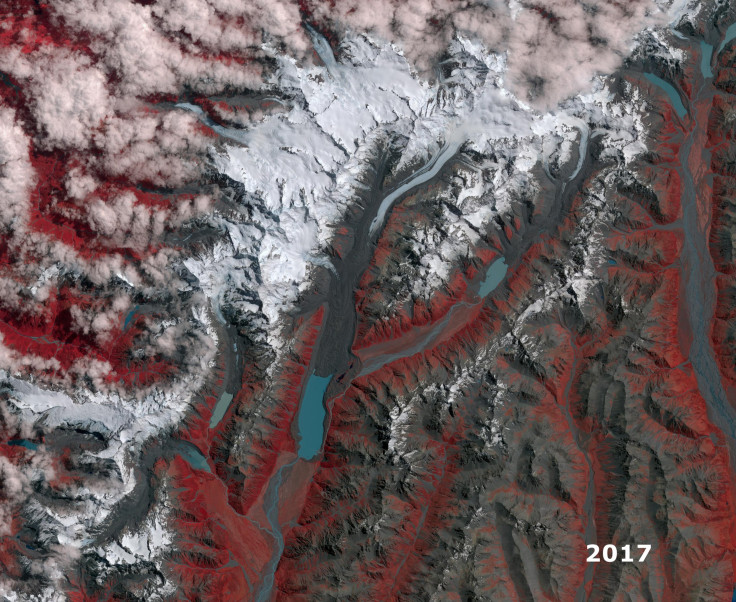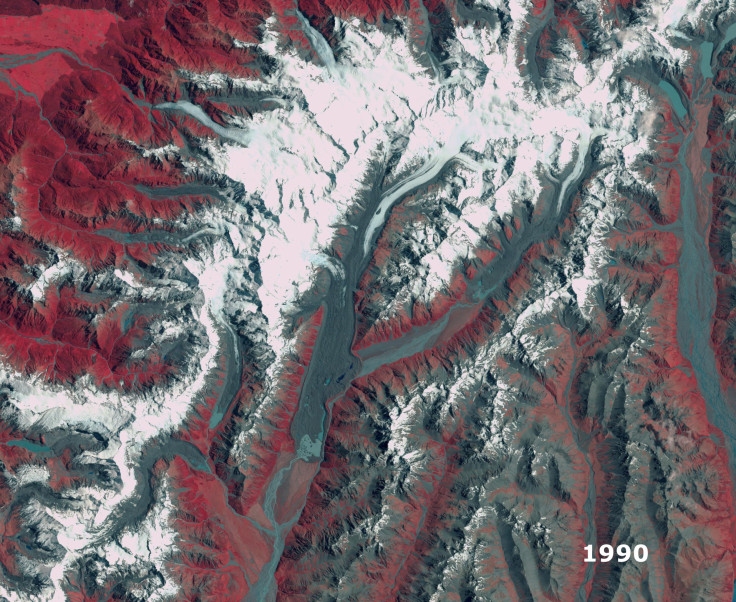Climate Change News: New Zealand's Glaciers Are Retreating NASA Images Show

New Zealand has more than 3,000 glaciers -- and they’re retreating, new images released by NASA Friday show.The glaciers have been receding since 1890 with short periods of small advances, NASA said. Most of the glaciers are located in the Southern Alps on the South Island in New Zealand.
Read: Climate Change News: 2016 Was The Hottest Year On Record, NASA, NOAA and WMO Confirm
An image taken on Jan. 12, 1990 by the NASA and United States Geological Survey Landsat shows the area, measuring 39 by 46 kilometers, covered in white. That area includes the Mueller, Hooker and Tasman glaciers on New Zealand's South Island.

When you fast forward to 2017, the areas turn from white to gray, an image taken by NASA’s Advanced Spaceborne Thermal Emission and Reflection Radiometer (ASTER) on Jan. 29 shows. The most recent image shows less snow cover and larger terminal lakes.
“Notice the larger terminal lakes, the retreat of the ice free of moraine cover, and the higher moraine walls due to ice thinning,” NASA pointed out in a statement.
There can be different causes for a glacier’s retreat, ASTER Science Team Leader Michael Abrams told International Business Times .
“The primary cause is that melting surpasses accumulation of snow,” said Abrams. “This change in the precipitation/melting budget can be a local weather condition, or a more regional weather change.”
Read: NASA Mission To Mars: Congress Votes Yes On Bill Instructing Agency To Send Humans To Planet By 2033
He says the glaciers in New Zealand are retreating at a slower pace than others located in other parts of the world. As for the future of the glaciers, Abrams says it’s hard to predict what will happen, “though the recent past behavior suggests we will see retreat for some unknown future time” or “glaciers could stop retreating.”
New Zealand's 3,000+ glaciers are retreating. Differences seen from years of satellite data. Details: https://t.co/SC69jVZg4i @NASAEarth pic.twitter.com/iHXPcIvij3
— NASA (@NASA) March 10, 2017
The recent image was taken by ASTER, which is one of five of Earth-observing instruments flying on Terra, a satellite launched in 1999. Via spatial resolution data in 14 bands, from the visible to the thermal infrared wavelengths, ASTER monitors our planet’s changing surface, such as glacial advances and retreats, volcanoes, coral reef degradation, surface heat balance and thermal pollution.
© Copyright IBTimes 2024. All rights reserved.




















